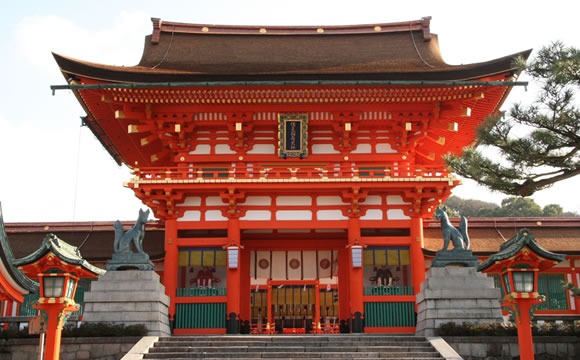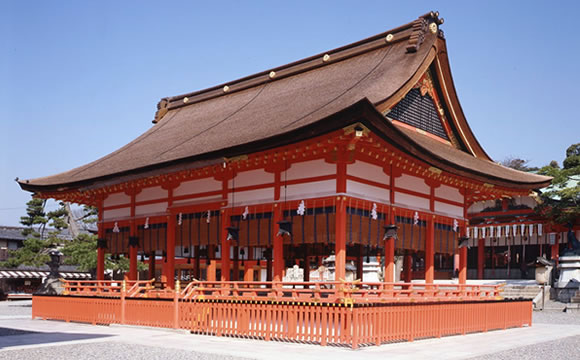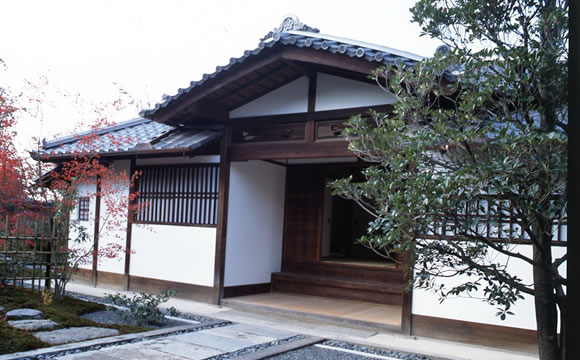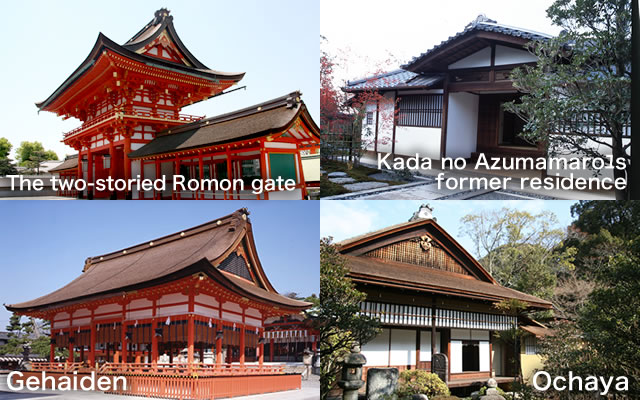The two-storied Romon gate, Gehaiden, Kada no Azumamaro’s former residence, Ochaya

The two-storied Romon gate is the building that makes up the main entrance of Fushimi Inari Taisha and has been designated an important cultural property. There is evidence that it already existed around 1500, and the two-storied gate, built with a hip-and-gable roof covered with cypress bark thatching, is believed to have been built during the rule of Toyotomi Hideyoshi in the time from the Warring States period to the Azuchi-Momoyama period. Hideyoshi prayed for his mother Oomandokoro's recovery from illness, and the gate was built in gratitude for her recuperation. His prayer was, "Please let my mother live for three years, and if that's not possible then two years, and if even that can't be granted, then at least thirty days, but please give her a longer life. If fulfilled, I will donate 10,000 koku. A koku is a unit of measurement equal to a year's worth of rice for one person or about 5 bushels. The record of this prayer remains today. On both sides of the romon gate are statues of gods called “zuijin” and they act as (the) bodyguards for Inari Okami. Of all the romon gates at shrines located in Kyoto City, this is the oldest and the largest.

As you go under the two-storied gate, the first thing you will see is the Gehaiden building with a hip-and-gable roof covered in cypress bark thatch, a designated important cultural property. There are iron lanterns hanging from the eaves that depict the twelve signs of the zodiac.

To the right of the Gehaiden is a building that was once the home for priests serving at the shrine, and the birthplace of mid-Edo period scholar of Japanese literature Kada no Azumamaro. Currently, the shoin, or drawing room, is the only remaining part of the building. It is a nationally designated historic site.

Down the stone steps to the right side of the main shrine is the Ochaya (tea house), an important cultural property. The tea house, built in the shoin style, is said to have been a gift from the emperor to Hakura Nobutsugu, the head priest at the old imperial palace inside the former palace grounds.




